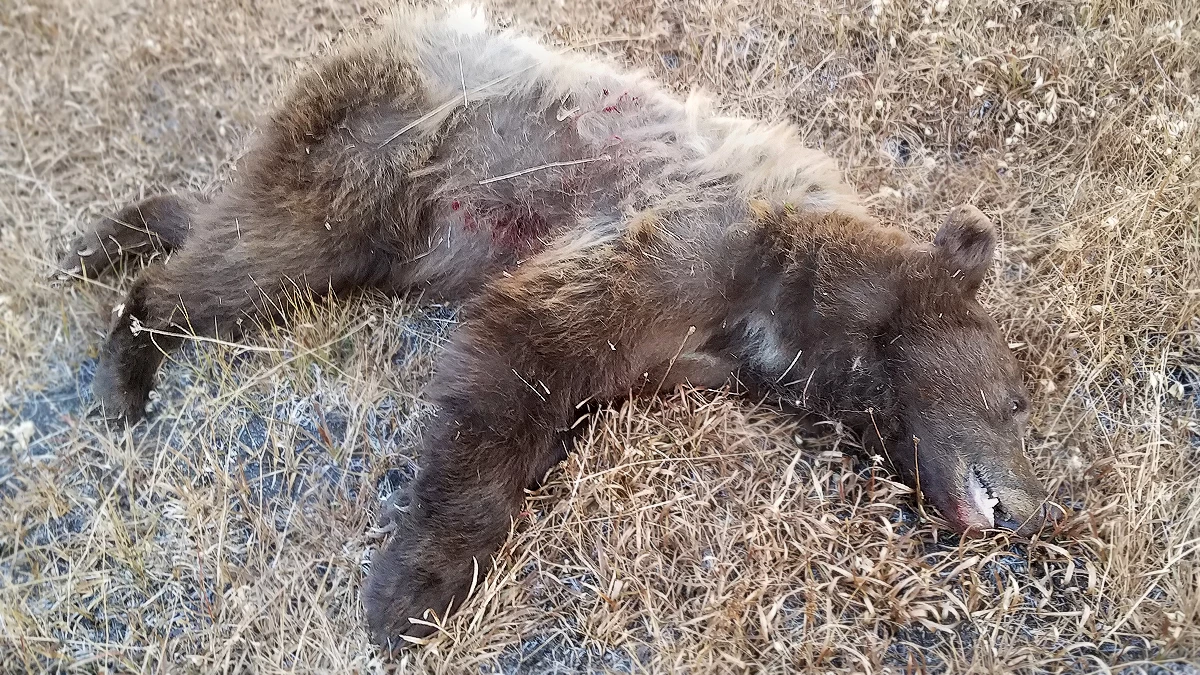
I recently harvested a young black bear on a solo bear hunt on California public lands. With the archery season for deer completely disrupted by California’s forest closures, it was hard to keep up with scouting and tracking. When the forests re-opened, I was able to resume my efforts, and while I didn’t harvest the large bear I was looking for, I didn’t want to pass up an opportunity to put some bear meat in the freezer.
Scouting
I did quite a bit of scouting leading up to the deer and bear seasons. It required a lot of mileage and elevation gain on public lands to get away from people and to eliminate the possibility of harvesting a trash bear.
It’s an ironic thing to leave the house really early in the morning to go scout and hunt for bear, just to step outside the door and see very large black bears, habituated to human waste, dumpster diving. Anybody who has spent any time in any mountain or resort town in California has likely observed these types of bears. It’s sadly, probably the only experience folks have with bears, and the only time they see them outside of wildlife photos.
California bear hunting is a pure spot and stalk pursuit. California has no spring bear season, does not allow the use of dogs to hunt, does not allow baiting, does not allow trapping, and many scents, if not all scents, are not allowed. A large portion of California is also closed to bear hunting, making travel a necessity for those who pursue bears. While the population of bears has risen, it is not in an even distribution across the state, making the pursuit of bears in the areas with a lower density, as challenging as it’s ever been.
My scouting choices are always based on two things. The first being my previous experiences seeing good bear sign or observing good bear habitat while backpacking, fishing, or pursuing other game, and returning to those areas ahead of the season. The second involves satellite photography, and looking for good meadows, streams, creeks, etc. that are far enough off the beaten path to get away from campsites, people, and other hunter pressure.
Ultimately, while I did put thousands of feet of elevation gain and loss, and lots of miles scouting areas I had seen on satellite images, I returned to an area I had visited year after year, but usually later in the year. The sign earlier in the season seemed to indicate bears were active in the area, versus simply passing through like they seem to later in the season. I continued to scout and glass the same promising area, 3 miles into the backcountry and a 1000 feet of gain. I returned multiple mornings and afternoons, patterned the wind, the lighting, and ultimately bumped a large cinamon phase bear.
At that point, I was committed to an area that I was almost certain would produce a bear, and so I prepared. I was readied my Eberlestock G1 Little Brother, Eberlestock A4SS weapon scabbard, Walker's Rope Game Ears, CZ 557 Carbine chambered in 270, w/ Vortex Diamondback Tactical 6-24x50 FFP, DIY Nylon game bags, lots of cordage, a few 1 inch webbing straps, and a Havalon Knife.
Harvest day
I readied all of the aforementioned gear the night before the hunt. I also packed lightweight high-calorie snacks, a sawyer squeeze water filter, and a full water bottle. I woke up at 4am, drove about 30 miles including some slower forest service roads, and hoofed the 3 miles and thousand feet of gain fast enough, that I would be set up and ready with good visibility, when shooting light at 6:15 rolled around. I knew exactly what direction the wind would be blowing at that time, after countless morning trips, and set up in a spot that would keep me from getting winded by a bear.
While I was layered up for the cold, my core temp dropped over the next 40 minutes of sitting still, and I would occasionally shiver. I hate sitting still. At almost exactly 7:00 am, a small bear popped out of the tall willows, and weaved in and out of them. This was not the bear I had scouted, but with a road trip coming up in a few days, and imminent weather that would certainly change the behavior of bears on the way, I decided I would not pass up the opportunity to harvest.
I struggled to steady for a 160 yard shot, as I shivered from the cold in a seated position, and attempted to get a rest on my pack, all the while the bear moved further away, continuing to weave in and out of willows. Not being one to risk taking a bad shot, injuring or losing an animal, I took the opportunity to move behind some downed trees as the bear moved into a thick peninsula-shaped chunk of vegetation.
As I had expected, the bear came out of the brush, now about 190 yards away. I flipped the safety, steadied myself off of a downed tree, and pulled the trigger. There was no loud report, just the sound of the firing pin. I had loaded my rifle earlier as soon as I got out of the car, and managed to load with the bolt just shy of fully extended, so when I closed the bolt, I had in fact never chambered one, and slid the bolt closed right over the top of my freshly loaded ammunition.
Wind in my favor, the bear had not heard me make my rookie mistake, and still had no idea I was nearby. I stayed calm and chambered a round as the bear began to quarter away and head into thick brush. I knew it was now or never, as I probably would not be able to find the bear again if it entered the vegetation ahead of it. I steadied, and as the bear began to enter the vegetation quartered away at 200 yards, I took a shot. I watched through my scope as the 140 grain bullet, moving more than 3000 fps, hit the bear like Thor’s hammer, and continued watching through the scope as the bear flipped straight onto its back, legs straight into the air, before it wasn’t visible in the tall grass and brush anymore.
I immediately chambered another round and cautiously approached where I had shot the bear 200 yards away. I was pretty sure that I not only hit the bear, but that it was probably a good shot and quick death. Nevertheless, I approached with caution ready to shoot again. I’ve been charged by a bear once before in my life before, and it’s not an experience I was eager to repeat, especially with a wounded bear.
As I got near the edge of the thick brush, I saw that the bear had immediately been dispatched, and didn’t even take a step after being shot. I was pleased that I was able to dispatch the bear so quickly and humanely, grateful I did not have to pursue a wounded or injured bear, and to my own greater satisfaction the shot hit both the heart and lungs. Aside from the one rookie dry firing exercise on an unchambered rifle, and finding a smaller bear than the one I had hoped to see again, the whole morning could not have gone better. While I had already put in a ton of work, the real work was just about to begin.
Packing Out
I dragged the bear about 10 feet, about as much as I could do alone so that it would be easier to field dress. The field dressing work went smoothly. I decided to push myself, and my Eberlestock G1 pack to the limit, and do the pack out solo in a single effort. If the bear had been an ounce heavier, I’d have opted to do multiple trips. I strapped large nylon game bags externally to the pack after filling the inside of the pack completely.
The pack was heavy, and less than ergonomic loaded the way it was. I ended up packing more than my body weight about 3 miles, and down a 1000 foot descent. While the pack held up fine, there is definitely an external frame I’ll be purchasing from Eberlestock, and adding to my hunting setup in the future. The descent was rough on my back, shoulders, and especially my knees, but I managed to reach the car, and did it in a decent time. It only took a few minutes to feel how beat up my body was from the solo pack out, but the real pain would come a day later.
CDFW Inspection
In California when you harvest a bear, you are required to get the harvest checked off, and a tooth extracted for aging and research. However, because of COVID, all local offices were closed, with no helpful information on message recordings whatsoever. Fortunately, I had the local game warden supervisor’s business card on hand and managed to schedule a house call with another game warden.
The visit was brief, involving a simple check of tags, validation of a properly field-dressed animal, a tooth extraction, and a little chit chat. I completed a simple harvest report online, and 2021’s bear season was over.
Reflections
My wife and I spent the next 2 days breaking down major muscle groups into steaks, roasts, stew meat, and grinder meat, and I also managed to flesh and salt the hide. While I didn’t regret the hard pack out, my body hated me for it. Everything hurt for the next two days.
The most difficult part of the hunt physically may have been packing out the bear, but the hardest part was the leg work and commitment that went into scouting, glassing, finding a good spot, finding bears, and then being in the right spot at the right time. My bear could have been twice as big, and when I load my rifle on an early morning in the dark, I’ll be sure to load with my bolt completely back as to actually chamber a round, but I really couldn’t have hoped for a better outcome on a public lands bear hunt in the Eastern Sierra.
Butchering
I won’t get heavy into the butchering. My wife and I spent a couple of days processing meat. Honestly, she did the majority of it while I worked on fleshing and tanning a hide, in addition to a euro mount. For the DIY butcher, you really need a grinder and a vacuum sealer. We use a KitchenAid meat grinder attachment and a basic Food Saver vacuum sealer. With those two items and sharp knives, we’ve done quite a few antelope, deer, elk, hogs, and bear. You could always get a dedicated meat grinder, but it’s nice to get extra use out of a stand mixer. Our stand mixer gets used for baking, and pasta making all the time.
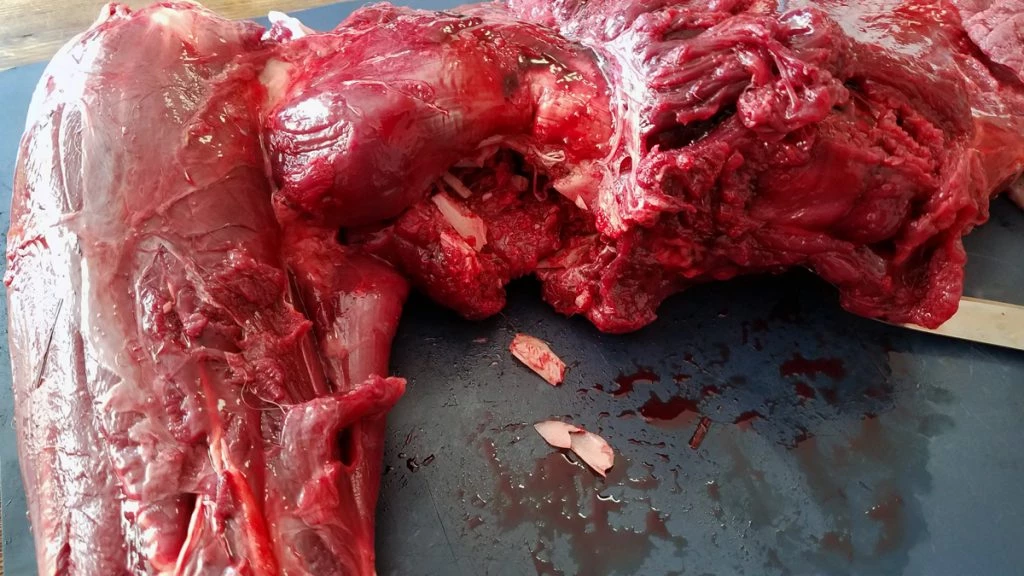
Shattered bones from an exit wound, caused by a bullet traveling through an arm after passing through the torso.
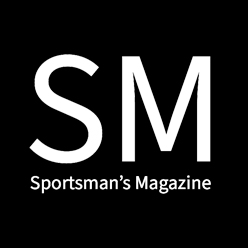
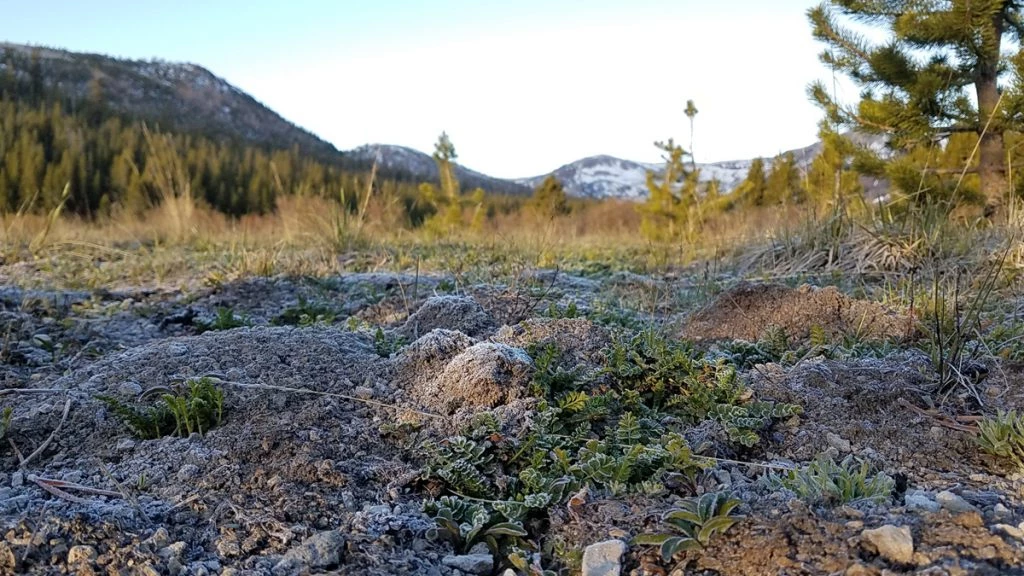
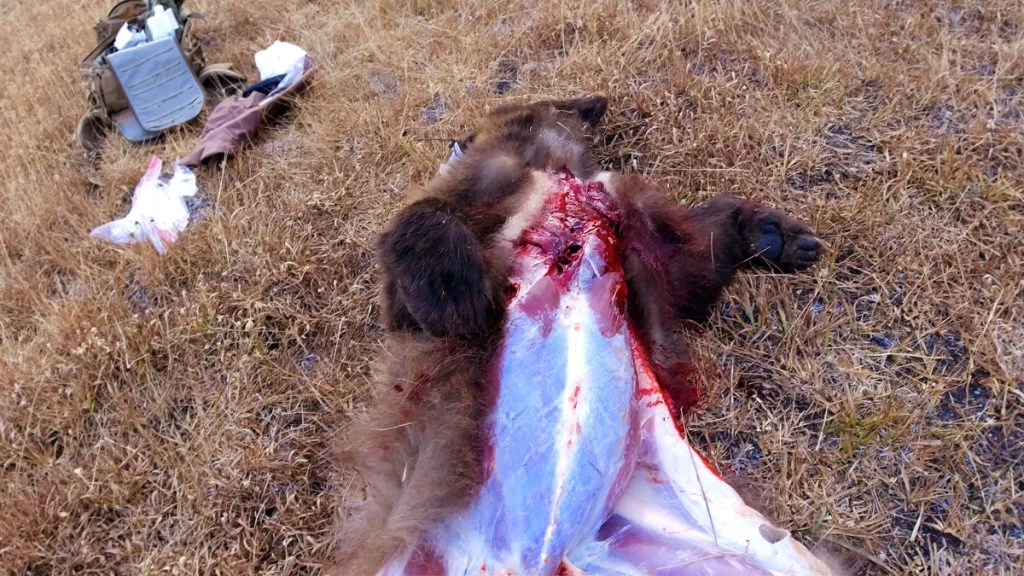
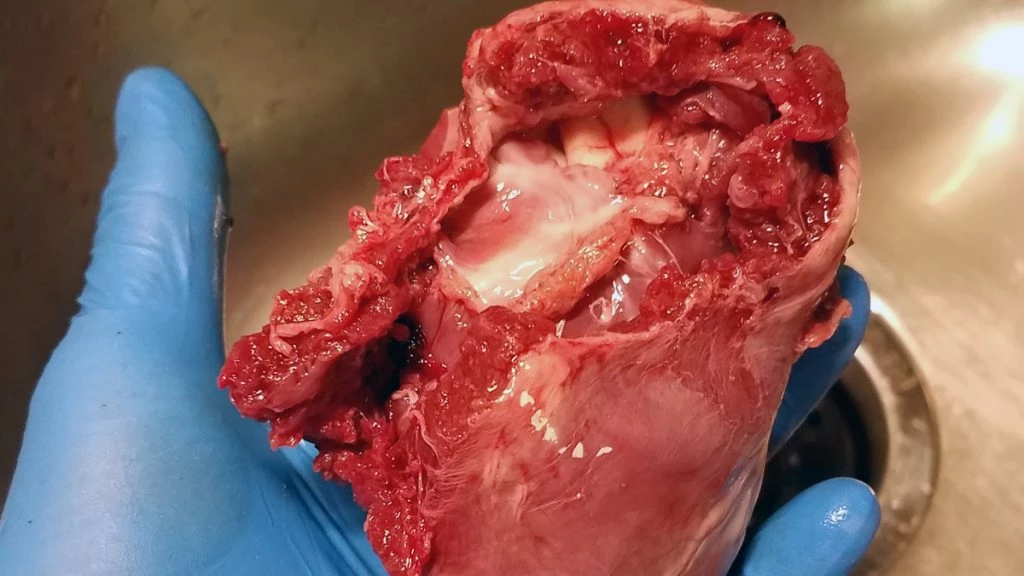
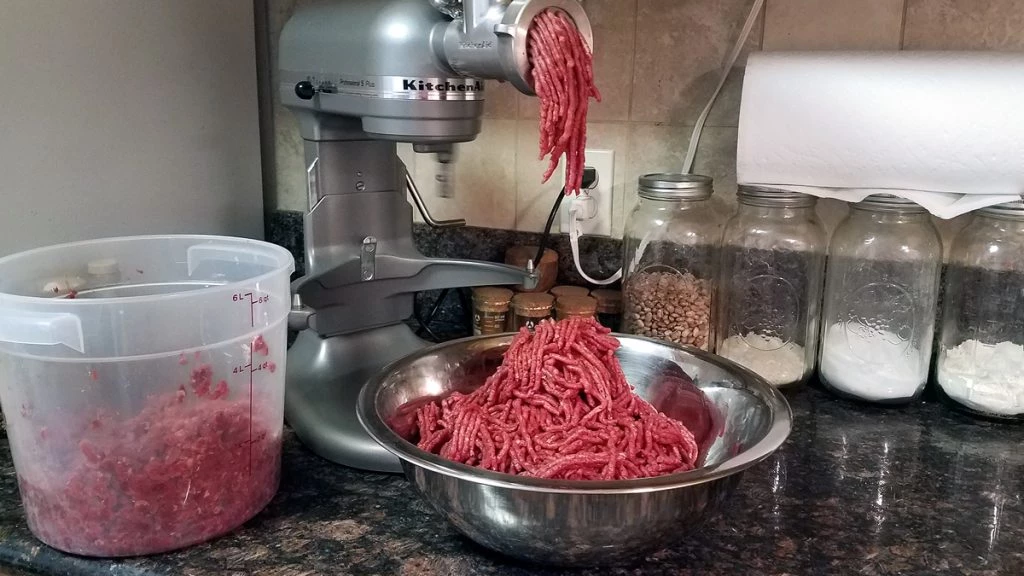
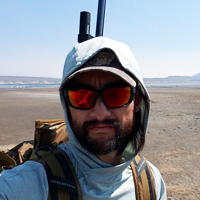
[…] Posted inUncategorized Solo Bear Hunt […]